10 Essential Factory Options For Your Sprinter Van Conversion

10 Essential Factory Options For Your Sprinter Van Conversion.
We get asked all of the time, how do I find a cargo van that is worth converting into a custom van conversion. When you choose to build with Paved To Pines, we can help you find and procure the vehicle for converting as we have relationships with the dealerships locally. But if you are looking on your own, there are definitely features you want to look at making sure your van has.
Things to consider:
Cargo van
Make sure you buy a Cargo van, not a crew or passenger van.
You should be searching for cargo vans because they're a blank slate and have the least amount of features that you don't need that increase the cost of your rig.
A fantastic thing with the cargo van for van conversions is you can order specific window's to be installed whereas a passenger van is loaded with windows and you have no other options. If you find a great conversion van on the lot already and it doesn't have windows, we can add some at our shop! We have different styles to choose from.
On top of all these other benefits, a cargo van is also the least expensive option – Crew vans & passenger vans are not only the worse option but they're much more expensive than just a traditional cargo van sometimes costing more than $10,000 extra. If you want a bench seat, that doesn't turn into a bed, you may consider a crew van. However, we can always add in aftermarket seats that offer more functionality if needed.
High roof
Nearly all of the conversion vans that we work on are high roofs. This is mostly because you can stand up in them BUT if you feel you'd have enough space with a medium roof, or something smaller, for parking, budget, or other reasons, we can work on that as well.
Even after we add roof insulation, standing height in a high roof Sprinter van, Promaster and Transit is at least 6’0. If you are taller than 6’1, we recommend going with a Transit van as they are the tallest high roof conversion van available on the market.
Wheelbase Options
The best wheelbase for you really depends on your personal preference and needs for the van conversion! The largest difference is the roof space for fans, air conditioner units, rack space, etc and the interior floor space to add more into your mini studio apartment on wheels.
As mentioned above, in the conversion van comparison tables:
The Dodge Promaster van with a 136" WB gives you 8'8.3" of buildable floor space, whereas the 159" WB gives you 10'5" of buildable space with the longest version giving you 11'6" of useable floorspace for your conversion.
The Ford Transit van with a 130" WB gives you 8'8.3" of buildable floor space, similar to the Promaster, whereas the 148" WB gives you 10'3" of buildable space with the longest version giving you 12'8" of useable floorspace for your conversion
The Mercedes Sprinter van with a 144" WB gives you 10'6" of buildable floor space, whereas the 170" WB gives you 14" of buildable space with the longest version giving you 15'6" of useable floorspace for your conversion
The smaller vans, like the Promaster 136" WB and the 159" WB (standard), the Ford Transit 130" WB and the 148" WB (standard) and the Sprinter 144" WB are great for in town maneuverability as they are all under 20' in length from bumper to bumper. The short wheelbase van conversions make it easier to navigate around cities and off-road.
The longest version of the Transit, Promaster and both models of the Sprinter 170 is a great choice for conversion if you are looking to travel long term in your conversion van.
The reason is, that if you get an interior wet bath or need additional seating or storage in your van, you're going to need a longer van as it takes up a large footprint. The 170 WB Sprinter is longer than all models of the Transit and Promaster and is just over 20 feet at 229'9" but will still fit into a regular parking spot.
Parallel parking is tricky when you get into the longest versions of each of the Transit and Promaster and next to impossible with the 170" WB Long body Sprinter. But the longest sprinter offers a ton of available space to use for your conversion and is great if you're not going to be doing a ton of city driving, which, really, is not what you wanna be doing in a campervan anyways. You wanna be out in nature.
4WD/AWD vs 2WD
Both are great options for van conversions. the 4x4 Sprinter is one of the most popular options on the market but with the AWD Transit coming out in 2020. The market might see a massive shift due to the massive price difference and affordability by Ford offering something similar.
However, the 2WD to be is an awesome and capable vehicle for a much more reasonable price, especially with the weight of the van conversions cargo area preventing it from being too light to drive in snow and ice. With the right tires and driver, the 2WD can do what you need your van to do.
Here are several reasons we say most people only need the 2WD OR a Ford Transit AWD option which is new in their 2020 models and much cheaper than a 4x4 Sprinter Van conversion.
First, a much lower initial cost and increased availability. Purchasing a 4×4 Sprinter Van from the dealership may require a waiting period of 6-18 months or longer. Purchasing a Ford Transit AWD may also require a waiting period but they are 10's of thousands of dollars cheaper than the Mercedes Sprinter 4x4 option.
Second, lower maintenance cost and better gas mileage. The 2WD gets 2-4 mi/gal better than the 4x4/4WD and has lower costs to maintain with fewer components and moving parts. On top of that, this is another reason we redirect most of our clients to the Ford Transit for their van conversion in the first place, cheaper parts, more availability in terms of mechanics, and you still get great gas mileage and while being a much much cheaper basecamp to start your campervan on.
Third, these vans are not designed for serious 4×4 driving anyways. If you are looking for a nimble, rock crawling, mudding, sand duner vehicle, this isn't it. These van conversions can handle a lot of roads and weather conditions, even in a 2WD, but a non-ideal wheelbase and low clearance height before you add on aftermarket wheels and tires and suspension kits along with the high roofs, it makes these vans susceptible to high centring or other damage. Especially if tanks and other modifications are added underneath the van.
Lastly, the 4×4 Sprinter is a limited slip system which means it is not actually a true 4×4.
At the end of the day it is your van conversion and your use that determines the van you buy, but you should get by with the Ford Transit AWD or a 2WD van in any of the models.
Gas vs. Diesel
Once again, both are good options for your van.
A major benefit of diesel is that they last so long. It's not unheard of to hit 300,000+ miles on your vehicle before it’s considered high mileage. Diesel is also more fuel-efficient. Sprinter vans get an average of 18-25mpg with diesel. If you’re towing or carrying trailers or heavier loads, diesel has more torque, which will also help with the weight of the van conversion but you'll need to make sure your payload is high enough to carry the weight properly.
Gas Sprinters are new in 2020 and are less common whereas gas options are much more common in Ford Transits and Dodge Promasters.
In saying that, a gas engine will give you faster acceleration and higher speeds than a diesel vehicle will, but less torque for carrying loads. However the new 3.5L Ecoboost has fantastic torque and horsepower.
Gas engine parts cost less and they’re more readily available, making a big difference when travelling in remote areas if you need your vehicle serviced. If you'll be travelling remote or south of the border into Mexico and South America as stated earlier in the van comparison you'll want to consider getting a petrol vehicle. In very cold climates, diesel tends to have a tougher time starting, so gas could be more applicable to extremely cold climates like Canadian Climates.
1/2 tonne vs 3/4 tonne vs 1 tonne
(250 vs 350 or 2500 vs 3500)
We typically recommend the 350/3500 class Sprinters, Transits, and Promasters and upgrading the suspension kit. This won't 'increase your GVWR' by OEM standards but it will certainly compensate for a heavier load in the back of the conversion van. At the very minimum, we recommend a levelling kit. Typically in extended length van conversions, the back of your campervan is going to sag with the weight of your build out. A levelling kit lifts the back up to compensate for the weight.
If you're going with a 250 or 2500 model van, you will need to ensure you're not overweight for your vehicles capacity. Generally people end up being close but you need to take into account loaded weight. Don't forget to think about you, your passengers, water, gear, and other belongings you will be taking on your trip. We always recommend getting a suspension upgrade on the 250 vans. A great way to ensure you're doing this properly is to wait until you've finished your conversion, then have them installed, so they can properly be chosen/installed to compensate for the added weight.
Dually vs Single
The smaller wheel wells of single axles allow for more conversion space and you'll very rarely ever need a dually. The 3500 has a single and a dually option in some of the vans, dually means larger wheel wells inside and less floor space for the conversion but a larger GVWR and tow rating.
If you will be towing heavy loads like toy trailer and having a big interior build, we recommend going with the 350/3500. Another thing to keep in mind is that the 170 extended 2500 and 3500 have the same 5000lb towing capacity and GVWR.
Roof rails
Roof rails can be added later if need be, they can be ordered from Mercedes, but they are a must.
The OEM roof rails allow you to fasten products on the roof without drilling holes or having to access the interior of the roof. It's easier to add this when ordering the vehicle vs adding it aftermarket in terms of cost.
Think of your solar panel system, gear racks, or hauling additional gear. These are a must!
Factory swivel bases
This is a no brainer! Swivels are awesome and open up the entire cabin area for more usable space in your van conversion. There is a whole bunch of space and two extra comfy seats at the front, why not use them.
Swivel bases can be added later, but the factory ones are cheaper and are shorter so when you rotate your feet don't dangle depending on your height.
Some other things to think about, though, is that you may be limited in your seat options from the factory if you add swivels. So if you need all the fixings and seat options in your van then it might be a better option for aftermarket swivels.
Heavy duty alternator
This one isn't mandatory but it is a fantastic option and acts as a generator for your house battery system. It also reduces the wear of your primary alternator by separating the vehicle and the house batteries so each have their own alternator charge.
However, we can always add an isolator that regulates the charge between the batteries and alternator if you only have one.
Usually a secondary alternator is only necessary if you have a large battery bank. A heavy-duty alternator might just as great, depending on your system setup. A secondary alternator is great if you have over 400 or more amp hours of lithium for your battery bank. It just ends up being less wear and tear on your van conversions OEM alternator in the long run.
Cab conveniences
If you're spending a lot of time in your van conversion, you should really consider adding some conveniences to the driving cabin.
Some of our favourites are:
- Heated seats
- 360 degree camera
- Heated and folding mirrors
Exterior Colour
This is one you might not think of. The exterior colour of your van conversion matters. As always, darker colours are going to attract the heat. This is great in the winter but not in the summer! The opposite applies to lighter colours. Typically, there are tons of different colour options available to you when ordering your conversion van from the factory. A neutral colour could be your best bet!
Aftermarket van conversion considerations:
Wheels and Suspension
We always recommend upgrading shocks, struts, wheels and tires to increase drivability and increase the weight rating to better handle the weight of the van conversion.
We recommend waiting to increase your suspension until you get your van to us as the aftermarket accessories are better than the factory options in this case.
Windows
Factory windows are always going to be cheaper than aftermarket windows. So if you are okay with fixed glass windows and know where you want them, it's safe to say its best to order them from the factory!
If you aren't sure where you want windows or you want windows with built in blinds, screens, or vents, it's best to wait and do aftermarket windows!


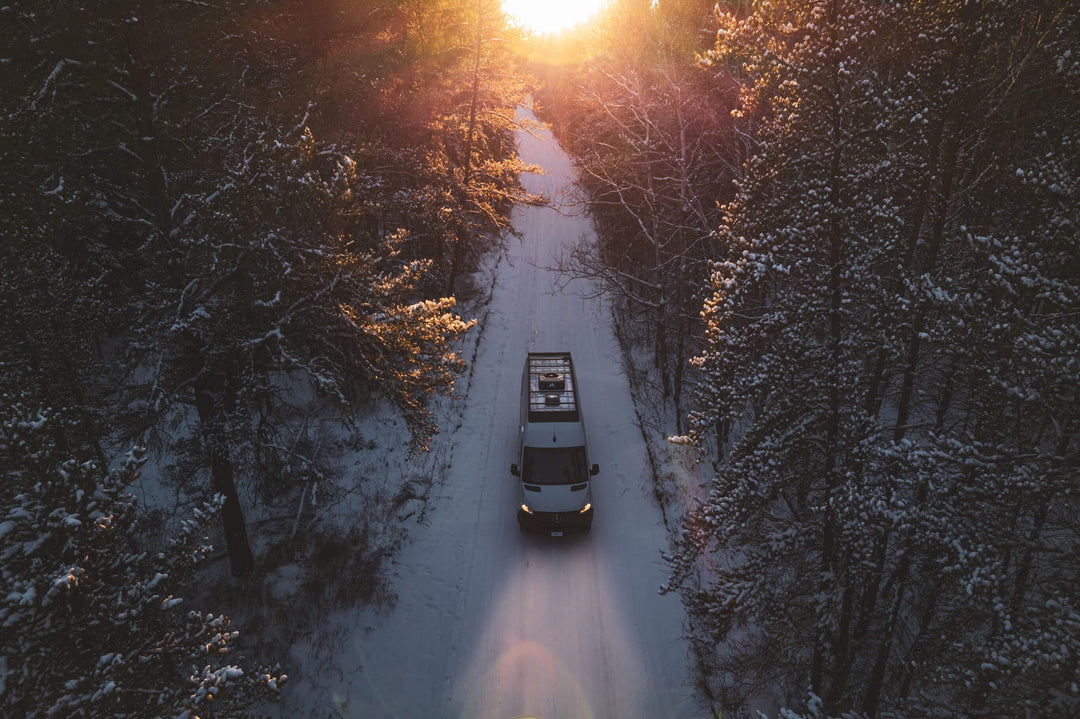
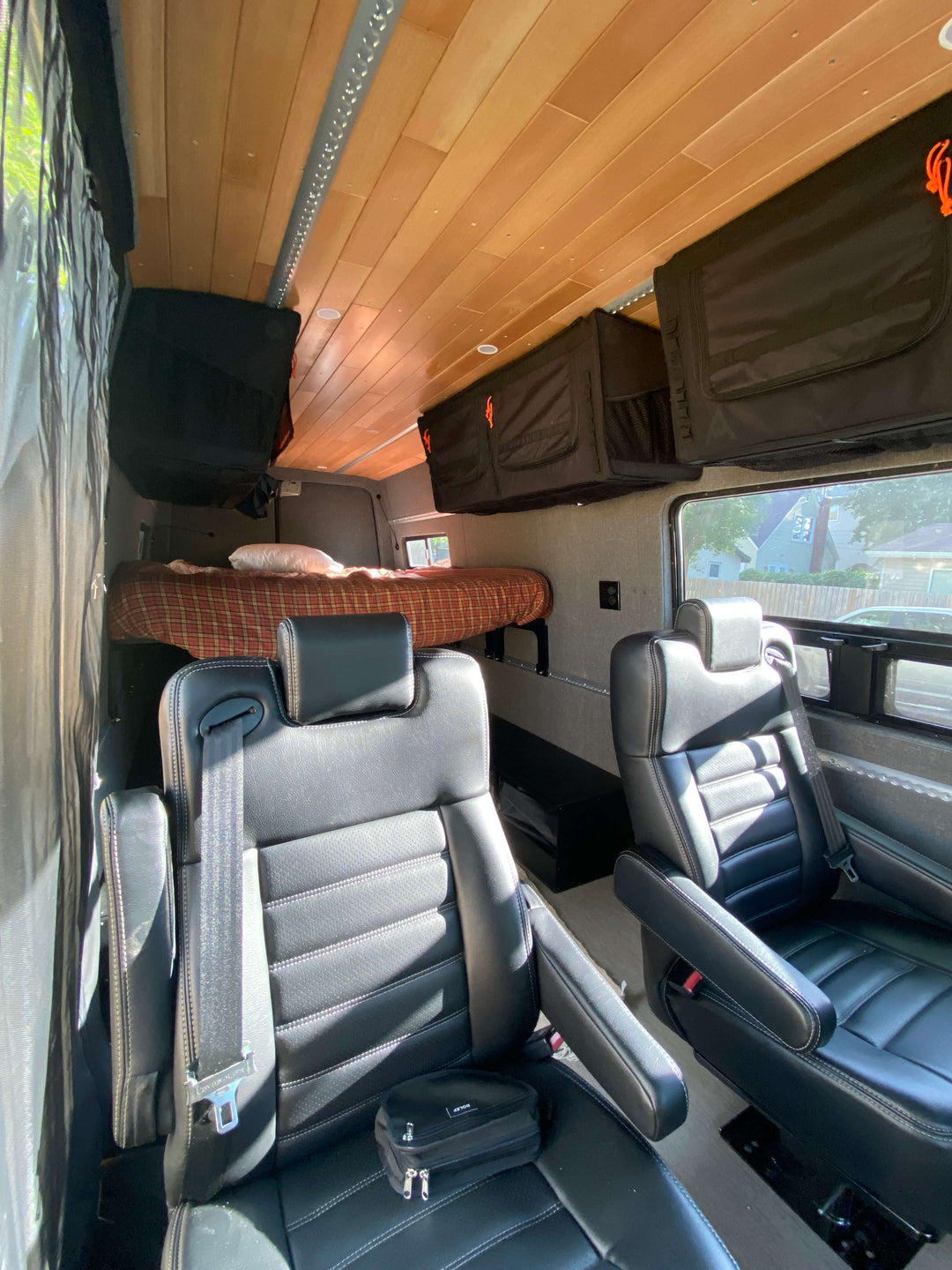
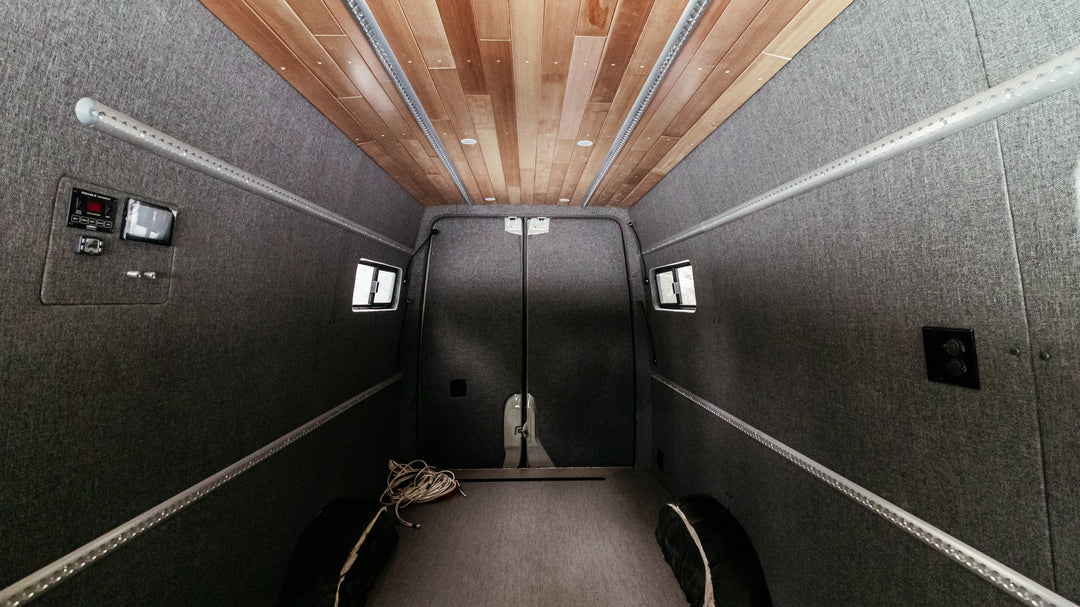
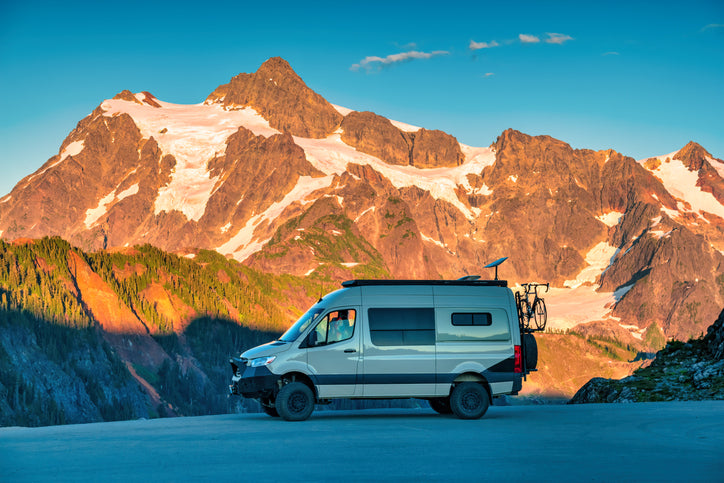
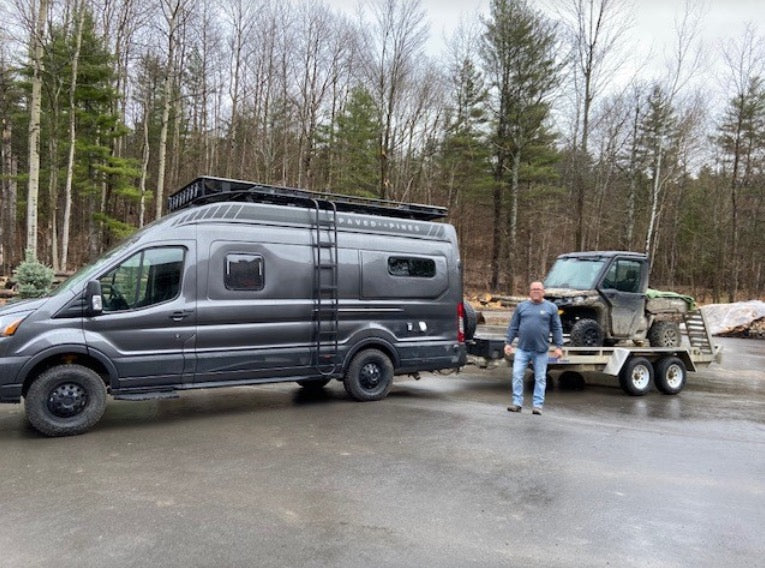

Very helpful thank you
Leave a comment